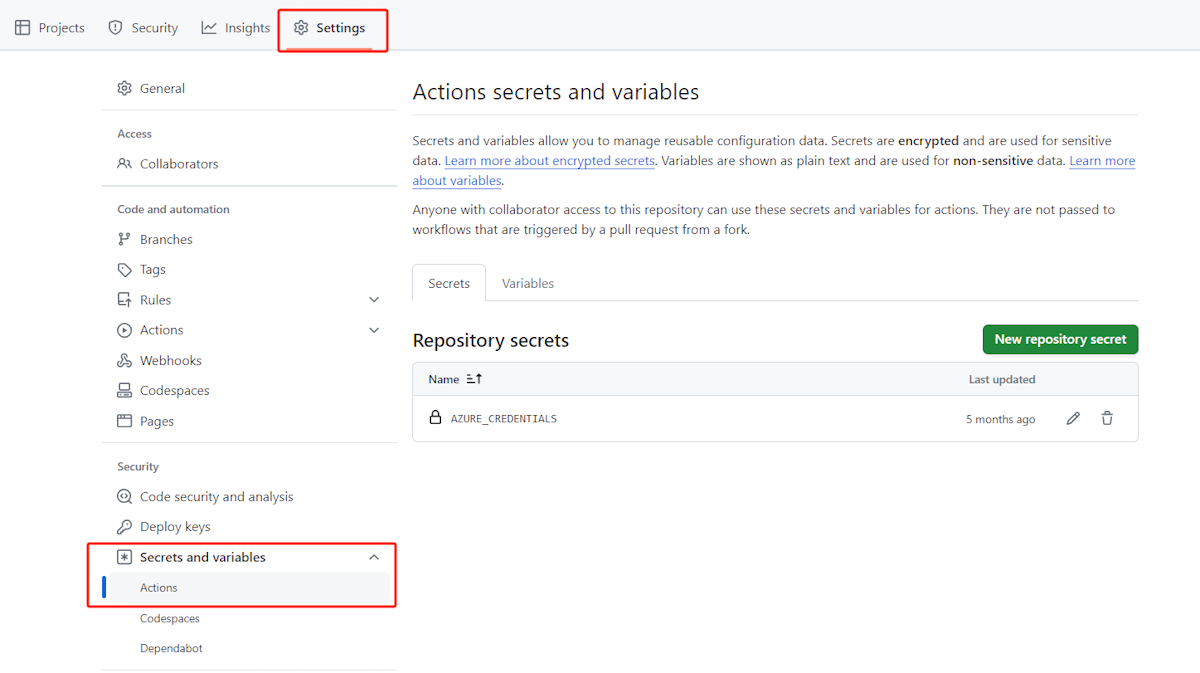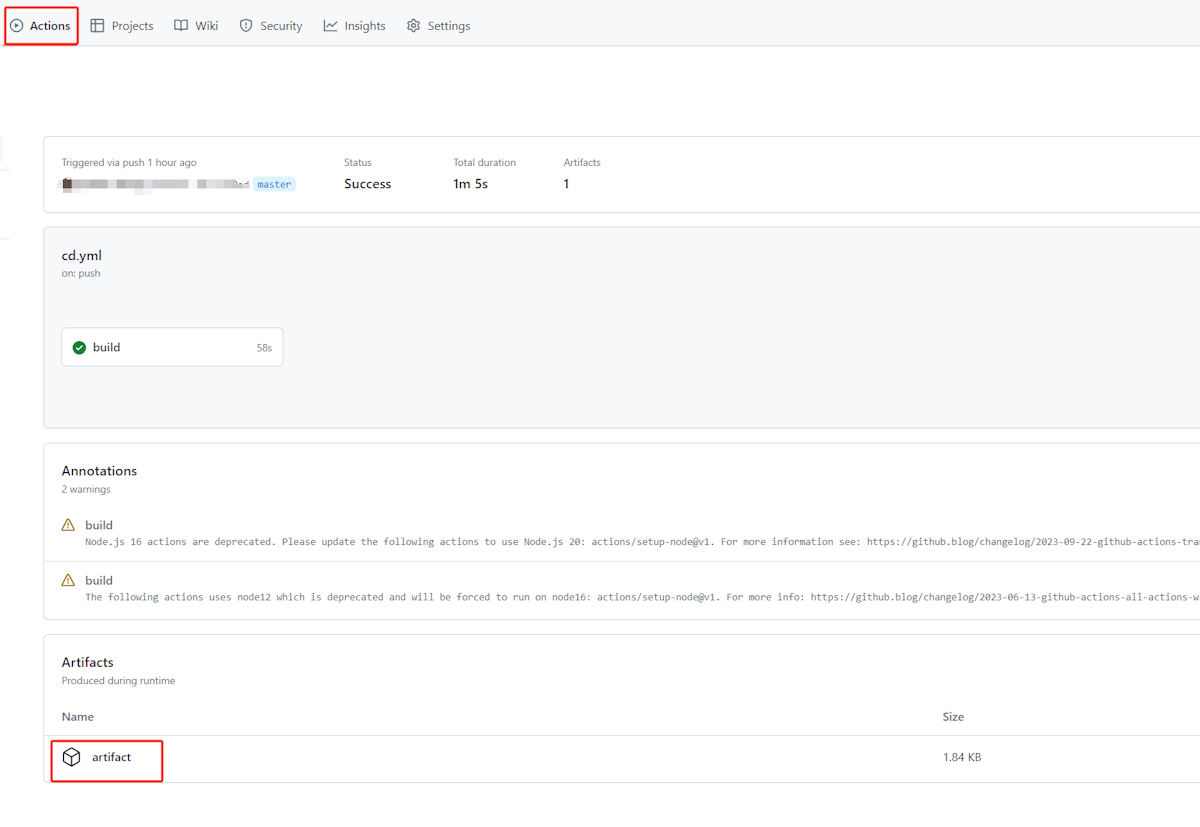Set up
CI/CD pipelines :
You can set
up a Continuous Integration and Continuous Deployment (CI/CD) pipeline for
Microsoft Teams apps created with Teams Toolkit. A Teams app CI/CD pipeline
consists of three parts:
- Build the project.
- Deploy the project to cloud
resources.
- Generate Teams app package.
Note : To create a pipeline for a Teams app,
it's required to prepare the necessary cloud resources, such as Azure Web App,
Azure Functions, or Azure Static Web App, and configure the app settings.
To build the
project, you must compile the source code and create the required deployment
artifacts. There are two methods to deploy the artifacts:
- Set
up CI/CD pipelines with Teams Toolkit CLI. [Recommended]
- Set
up CI/CD pipelines using your own workflow. [Optional]
Set up
CI/CD pipelines with Teams Toolkit CLI
Note : Use Teams Toolkit version 5.6.0 or a
later.
You can
use Teams
Toolkit command line interface (CLI) to set up CI/CD pipeline for your
Teams app.
Prerequisites
|
Item |
Description |
|
Set up
required resources for your Teams app, such as Teams app ID, bot ID, and so
on. |
• Manually
extract the resources from the manifest.json file under the appPackage folder. |
|
Configure
Azure resources |
• Manually
prepare the resources by examining the bicep files under the infra folder. |
|
Ensure
that you've a service principal and its access policies on resources are
properly configured. Set up a service principal as follows: |
• Create
service principal using Entra portal. |
 |
After you've
completed the prerequisites, let's set up a pipeline:
Set up
pipeline with GitHub
To set up
the pipeline with GitHub, follow these steps:
- Open Visual Studio Code.
- Create a cd.yml file
in your project under .github/workflows folder and add the
following code in the file:
- YAML
on: push: branches: - main jobs: build: runs-on: ubuntu-latest env: TEAMSAPP_CLI_VERSION: "3.0.0" # Add extra environment variables here so that teamsapp cli can use them. steps: - name: "Checkout GitHub Action" uses: actions/checkout@v4 - name: Setup Node 20.x uses: actions/setup-node@v1 with: node-version: "20.x" - name: install cli run: | npm install @microsoft/teamsapp-cli@${{env.TEAMSAPP_CLI_VERSION}} - name: Login Azure by service principal run: | npx teamsapp auth login azure --username ${{vars.AZURE_SERVICE_PRINCIPAL_CLIENT_ID}} \ --service-principal true \ --tenant ${{vars.AZURE_TENANT_ID}} \ --password ${{secrets.AZURE_SERVICE_PRINCIPAL_CLIENT_SECRET }} \ --interactive false - name: Deploy to hosting environment run: | npx teamsapp deploy --ignore-env-file true \ --interactive false - name: Package app run: | npx teamsapp package - name: upload appPackage uses: actions/upload-artifact@v4 with: name: artifact path: appPackage/build/appPackage.zipNote : The default pipeline triggers when push events occur on the main branch. You've the option to modify it to suit your specific requirements.
- Go to GitHub.
- Update the following variables
and secrets you created during the prerequisites:
- AZURE_SERVICE_PRINCIPAL_CLIENT_ID, AZURE_TENANT_ID,
and AZURE_SERVICE_PRINCIPAL_CLIENT_SECRET
- Go to GitHub.

Note : The AZURE_SERVICE_PRINCIPAL_CLIENT_SECRET variable must be set as secret. Utilize the GitHub environment to use different sets of variables.
- Go to the teamsapp.yml file.
In the deploy stage, the values enclosed in ${{}} are
the required variable keys. If you've used the provision command
from Teams Toolkit, you can locate the values in the environment files in
the .env folder.
Set the BOT_AZURE_APP_SERVICE_RESOURCE_ID as a repository variable:
- Go to the teamsapp.yml file.
In the deploy stage, the values enclosed in ${{}} are
the required variable keys. If you've used the provision command
from Teams Toolkit, you can locate the values in the environment files in
the .env folder.

Go to the appPackage/manifest.json file. The values enclosed in ${{}} are the required variable keys. If you've used the provision command from Teams Toolkit, you can locate the values in the environment files in the .env folder.
Set the TEAMS_APP_ID as a repository variable:

In the GitHub, navigate to your repository’s Settings and select Secrets and variables > Actions.
Update the variable keys that you've gathered for the following variables:
- AZURE_SERVICE_PRINCIPAL_CLIENT_ID
- AZURE_TENANT_ID
- AZURE_SERVICE_PRINCIPAL_CLIENT_SECRET
- BOT_AZURE_APP_SERVICE_RESOURCE_ID
- TEAMS_APP_ID
Add the variables defined in your repo directly into your yml file, excluding the following three variables:
- AZURE_SERVICE_PRINCIPAL_CLIENT_ID
- AZURE_TENANT_ID
- AZURE_SERVICE_PRINCIPAL_CLIENT_SECRET
- AZURE_SERVICE_PRINCIPAL_CLIENT_ID

4. Run the
pipeline.
Push code to
the repo to trigger pipeline.
Note : You don't need to commit env files
under env folder to the repo. The env variables required for executing the
CI/CD pipeline are already set in the repo variables.
After the
pipeline executes successfully, the log displays that the code is deployed to
Azure and the appPackage is generated in the artifacts.
Set up
pipeline with Azure DevOps
To set up
the pipeline with Azure DevOps, follow these steps:
- Open Visual Studio Code.
- Create a cd.yml file
in your project and add the following code in the file:
- YAML
trigger: - main pool: vmImage: ubuntu-latest variables: TEAMSAPP_CLI_VERSION: 3.0.0 steps: - task: NodeTool@0 inputs: versionSpec: "20" checkLatest: true - script: | npm install @microsoft/teamsapp-cli@$(TEAMSAPP_CLI_VERSION) displayName: "Install CLI" - script: | npx teamsapp auth login azure --username $(AZURE_SERVICE_PRINCIPAL_CLIENT_ID) --service-principal true --tenant $(AZURE_TENANT_ID) --password $(AZURE_SERVICE_PRINCIPAL_CLIENT_SECRET) --interactive false displayName: "Login Azure by service principal" - script: | npx teamsapp deploy --ignore-env-file true --interactive false displayName: "Deploy to Azure" workingDirectory: $(System.DefaultWorkingDirectory) - script: | npx teamsapp package displayName: "Package app" workingDirectory: $(System.DefaultWorkingDirectory) - publish: $(System.DefaultWorkingDirectory)/appPackage/build/appPackage.zip artifact: artifact Note :
The default pipeline triggers when push events occur on the main branch. You can modify it to meet your specific requirements.
1. Push the code to the repo.
2. Setup Azure pipeline.
After you push your code to the repo, navigate to Pipelines and select New pipeline. Select your repo and the existing yml file to configure your pipeline.
3. Update the following variables and secrets you created during the prerequisites:
- AZURE_SERVICE_PRINCIPAL_CLIENT_ID, AZURE_TENANT_ID,
and AZURE_SERVICE_PRINCIPAL_CLIENT_SECRET
- Go to the teamsapp.yml file.
In the deploy stage, the values enclosed in ${{}} are
the required variable keys. If you've used the provision command
from Teams Toolkit, you can locate the values in the environment files
in the .env folder.
Set the BOT_AZURE_APP_SERVICE_RESOURCE_ID as a repository variable:

- AZURE_SERVICE_PRINCIPAL_CLIENT_ID, AZURE_TENANT_ID,
and AZURE_SERVICE_PRINCIPAL_CLIENT_SECRET
Go to the appPackage/manifest.json file. The values enclosed in ${{}} are the required variable keys. If you've used the provision command from Teams Toolkit, you can locate the values in the environment files in the .env folder.
Set the TEAMS_APP_ID as a repository variable:

You need to set the following key name variables in the repo:
- AZURE_SERVICE_PRINCIPAL_CLIENT_ID
- AZURE_TENANT_ID
- AZURE_SERVICE_PRINCIPAL_CLIENT_SECRET
- BOT_AZURE_APP_SERVICE_RESOURCE_ID
- TEAMS_APP_ID
To set variables in your pipeline, go to your pipeline and select Edit > Variables.
Note : For security purposes, select the Keep this value secret checkbox if it's necessary.

Run the pipeline.
Push code to the repo to trigger pipeline.
Note :
There's no need to commit env files under env/ folder to the repo. The env variables required for executing the CI/CD pipeline are already established in the pipeline variables.
After the pipeline executes successfully, the log displays that the code is deployed to Azure and the appPackage is generated in the artifacts.

Set up
CI/CD pipelines using your own workflow
If the Teams
App CLI doesn't meet your pipeline requirements, you can develop a custom
deployment process that suits your needs. This section provides guidance on
deploying to Azure with custom methods.
Note : If you already have a complete CI/CD
pipeline for deploying to your Azure resource, and your Teams app needs to read
environment variables during runtime, configure these environment variables in
the settings of your Azure resource. For post-deployment testing, see generate
Teams app package.
The teamsapp
deploy command executes the actions defined in the deploy stage
of the teamsapp.yml file. The deploy stage consists
of build and deploy actions. To create a custom deployment
method, rewrite these actions based on your specific requirements and
preferences.
As an
example, a basic bot TypeScript project has the following deploy stage in
its teamsapp.yml:
deploy:
# Run npm command
- uses: cli/runNpmCommand
name: install dependencies
with:
args: install
- uses: cli/runNpmCommand
name: build app
with:
args: run build --if-present
# Deploy your application to Azure App Service using the zip deploy feature.
# For additional details, refer to this link.
- uses: azureAppService/zipDeploy
with:
# Deploy base folder
artifactFolder: .
# Ignore file location, leave blank will ignore nothing
ignoreFile: .webappignore
# The resource id of the cloud resource to be deployed to.
# This key will be generated by arm/deploy action automatically.
# You can replace it with your existing Azure Resource id
# or add it to your environment variable file.
resourceId: ${{BOT_AZURE_APP_SERVICE_RESOURCE_ID}}
These
actions perform the following tasks:
- Run npm install and npm
build to build the project.
- Deploy code to Azure app
service.
You can
customize these actions in your CI/CD pipeline. Here's an example that utilizes
GitHub's actions:
# build
- name: Setup Node 20.x
uses: actions/setup-node@v1
with:
node-version: '20.x'
- name: 'npm install, build'
run: |
npm install
npm run build --if-present
- name: 'zip artifact for deployment'
run: |
zip -r deploy.zip . --include 'node_modules/*' 'lib/*' 'web.config'
# deploy
- name: 'Login via Azure CLI'
uses: azure/login@v1
with:
client-id: ${{ vars.CLIENT_ID }}
tenant-id: ${{ vars.TENANT_ID }}
subscription-id: ${{ vars.SUBSCRIPTION_ID }}
- name: 'Run Azure webapp deploy action using azure RBAC'
uses: azure/webapps-deploy@v2
with:
app-name: ${{ vars.AZURE_WEBAPP_NAME }}
package: deploy.zip
The Teams
Toolkit supports Teams app projects, written in various programming languages
and designed for hosting on different Azure services. The following actions for
building and deploying. Use these actions when setting CI/CD deployment
pipelines.
Build:
| Language | GitHub | Azure Pipeline |
|---|---|---|
| JS or TS | actions/setup-node | NodeTool@0 |
| C# | actions/setup-dotnet | DotNetCoreCLI@2 |
Deploy:
| Resource | GitHub | Azure Pipeline |
|---|---|---|
| Azure App Service | azure/webapps-deploy | AzureWebApp@1 |
| Azure Functions | Azure/functions-action | AzureFunctionApp@2 |
| Azure Static Web Apps | Azure/static-web-apps-deploy | AzureStaticWebApp@0 |
Credential
needed for login to Azure
When you
deploy app code to Azure App Service, Azure Functions, or Azure Container App
through CI/CD, you need a service principal for Azure login. You can log in to
Azure using a service principal in two ways:
- OpenID Connect (OIDC):
- For GitHub action, see how
to use
the Azure login action with OpenID Connect.
- For Azure pipeline, see how
to create
an Azure Resource Manager service connection that uses workload identity
federation.
- Secret: The TeamsApp CLI
supports sign-in using a service principal with a secret. For more
information, see how to create
a new client secret.
Generate
Teams app package
To
distribute your Teams app, the appPackage is required. You can
automatically create the appPackage.zip using the teamsapp
package command in Teamsapp CLI. If you're unable to use Teamsapp CLI,
follow these steps to manually create the appPackage:
- Prepare a appPackage folder.
- Place the manifest.json file
in the appPackage folder. The default manifest.json file
in the Teams Toolkit project contains placeholders, denoted by ${{}}.
Replace these placeholders with the correct values.
- Place your app icons in
the appPackage folder. To prepare your app icon, see app
icons.
- Zip the files in the appPackage folder.



No comments:
Post a Comment